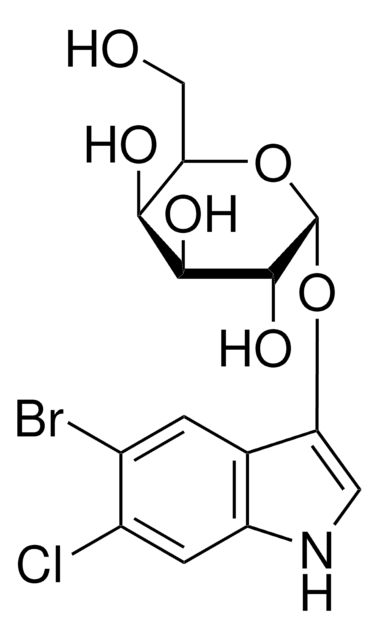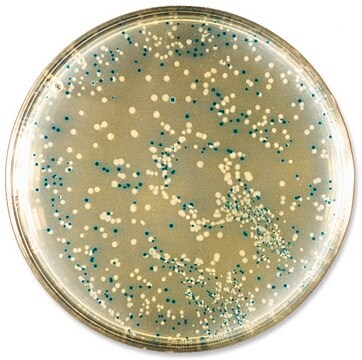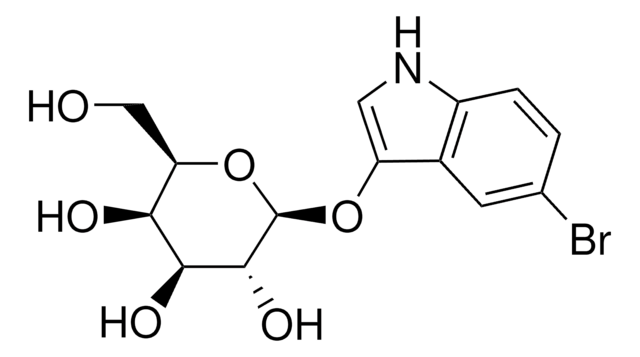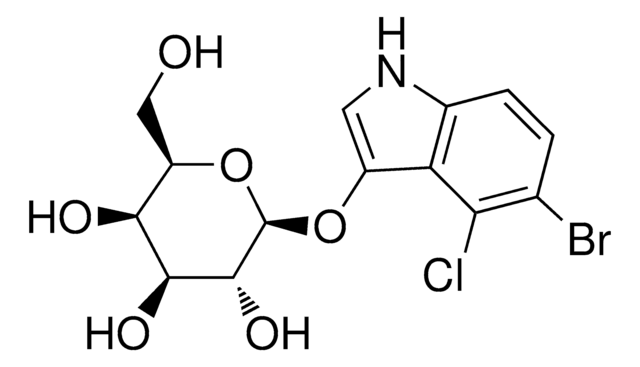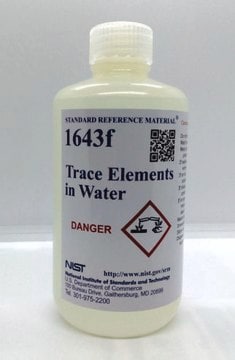S7313
S-Gal® sodium salt
reagent for selection of recombinant bacterial clones
Sinonimo/i:
3,4-Cyclohexeneoesculetin-B-D-galactopyranoside sodium salt
About This Item
Prodotti consigliati
Grado
for molecular biology
Sterilità
non-sterile
Saggio
≥95% (HPLC)
Forma fisica
powder
IVD
not for in vitro diagnostic use
Solubilità
H2O: 100 mg/mL
Compatibilità
suitable for β-galactosidase test
Temperatura di conservazione
room temp
Descrizione generale
Applicazioni
Caratteristiche e vantaggi
- More intense color contrast than X-gal
- Water-soluble and autoclavable for easiest use
- Excellent for use in automated colony counters
- No need to make stock solutions
Altre note
formulation. A medium prepared with S-Gal® is moderately dark due to the presence of ferric ammonium citrate. This darker background often provides enhanced contrast for automated colony counting or isolation.
Avvertenza
Principio
Linkage
Ricostituzione
Note legali
Prodotti correlati
Codice della classe di stoccaggio
11 - Combustible Solids
Classe di pericolosità dell'acqua (WGK)
WGK 3
Punto d’infiammabilità (°F)
Not applicable
Punto d’infiammabilità (°C)
Not applicable
Dispositivi di protezione individuale
Eyeshields, Gloves, type N95 (US)
Certificati d'analisi (COA)
Cerca il Certificati d'analisi (COA) digitando il numero di lotto/batch corrispondente. I numeri di lotto o di batch sono stampati sull'etichetta dei prodotti dopo la parola ‘Lotto’ o ‘Batch’.
Possiedi già questo prodotto?
I documenti relativi ai prodotti acquistati recentemente sono disponibili nell’Archivio dei documenti.
I clienti hanno visto anche
Il team dei nostri ricercatori vanta grande esperienza in tutte le aree della ricerca quali Life Science, scienza dei materiali, sintesi chimica, cromatografia, discipline analitiche, ecc..
Contatta l'Assistenza Tecnica.
